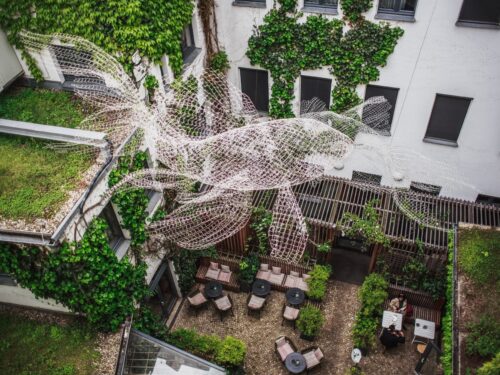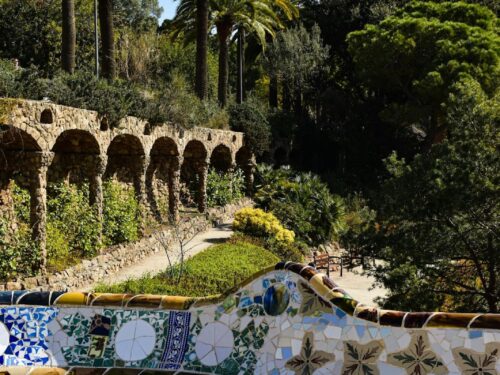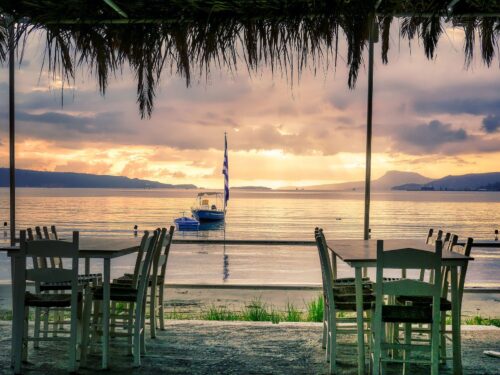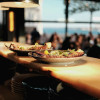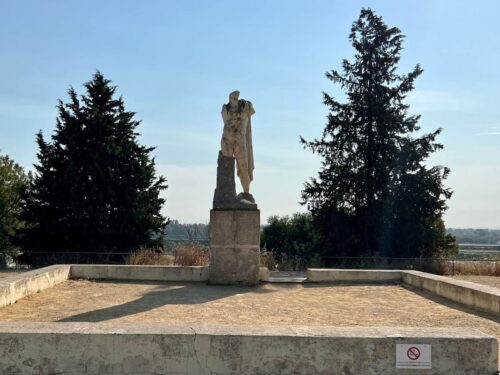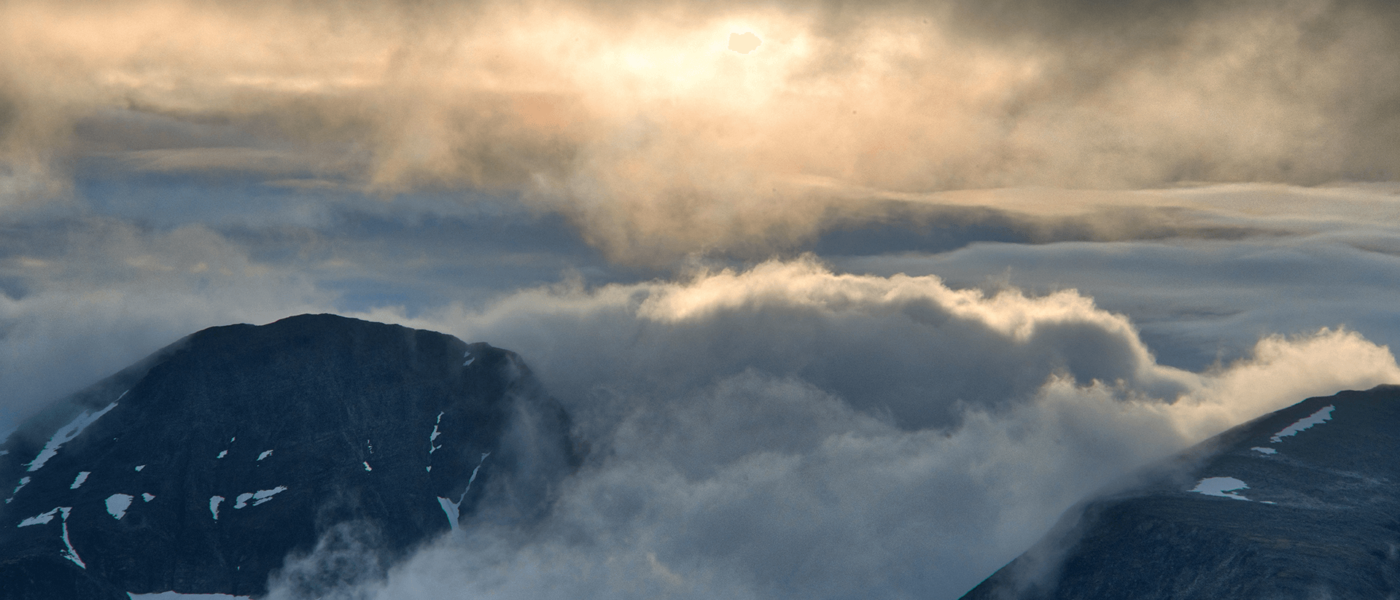

This travelogue is about three friends embarking on a 20-day wilderness hike in one of the most beautiful alpine areas in northern Sweden: Sarek National Park.
The Sarek National Park is a national park in Jokkmokk Municipality, Lapland in northern Sweden. Established in 1909–1910, the park is one of the oldest national parks in Europe. It is adjacent to two other national parks, namely Stora Sjöfallet and Padjelanta. The shape of Sarek National Park is roughly circular with an average diameter of about 50 kilometers.
The most noted features of the national park are six of Sweden’s thirteen peaks over 2,000 meters located within the park’s boundaries. Among these is the second highest mountain in Sweden, Sarektjåkkå, whilst the massif Áhkká is located just outside the park. The park has about 200 peaks over 1,800 meters, 82 of which have names. Due to the long trek, the mountains in the district are seldom climbed. There are approximately 100 glaciers in Sarek.

Sarek National Park hiking
Sarek is a popular area for hikers and mountaineers. Beginners in these disciplines are advised to accompany a guide since there are no marked trails or accommodations and only two bridges aside from those in the vicinity of its borders. The area is among those that receives the heaviest rainfall in Sweden, making hiking dependent on weather conditions. It is also intersected by turbulent streams that are hazardous to cross without proper training.
Mine, Hendrik and Björn are teaming up for this awesome adventure. Both Mine and Hendrik have never explored the wilderness before. They have never been out of their comfort zone for longer periods of time. I myself have been exploring for many years now and have optimized my system and balanced comfort and weight to my needs. Optimizing your setup is a thing that happens over many years of using it. Everyone is different so there is no one step solution to doing it.
See also: Hiking Gear Guide

Preparing to go hiking in Sarek National Park
Both Mine and Hendrik have relied heavily on my system and what I think is needed for such an endeavor. This might be a great starting point as it will save loads of money and time which would otherwise be spent on looking for the right equipment to do the job. But it doesn’t replace using the system and knowing it’s as well as your own limits.
Everyone is different in many aspects:
Are you fit? How cold a sleeper are you? What’s your diet? How does your digestion tract react to high caloric trail foods? Do you like to bathe in frosty waters? Are you comfortable to share a tent with others? Sharing a tent could mean that you’ll be stuck in a confined space with people for a long time, in case of severe weather.
Questions of comfort would also be things like:
Are you comfortable of wearing the same t-shirt for 2 weeks? Most people who have never done anything like this can’t answer these questions. Coming from the city we are cradled in luxury and are used to having things like shelter, food, hot water and clean clothes on demand. Out there everything is different.
You need to make many choices: Simple things like when is the best time to wash my clothes. There are days when I leave the shelter in the morning, thinking to myself: This is washing day! Of course, you’ll want to wash your clothes when the sun is out to dry them quickly.

Overcoming doubts and fears
People who have never gone on a long, untethered wilderness trip will have lots of things going through their minds while planning the trip. This can lead to become overly cautious and might lead you to bring lots of gear with you that you don’t actually need. Outdoor resellers will try to make money with your fears. They will try to sell you the heaviest duty and most expensive gear. Nature will surely devour you, if you don’t have super heavy duty, rugged gear for your trip. Most of the heavy gear is overbuilt and simply not needed, even for off trail adventures.
Where do we start?

Creating the route for a 21-day hike in Sarek National Park
Usually the first thing to decide is where to explore. Since we’ll be using a GPS device for any adventure like this, it will usually start with creating a route. There are many different systems to use. I have been using Garmin devices for a long time, which is why we will be sticking with it as I will be the main navigator on this trip.
I have explored Sarek many times. In good weather, I won’t need any navigation device because I know where I’m going but in adverse conditions with hiking in the clouds or thick fog there might be no visibility. It’s a good thing to have, even if you know the area well. For this trip, we chose to use Garmin inReach because of its live tracking function. It can also serve as an emergency signaling device in case someone needs to be rescued.
‘Hope for the best, plan for the worst’
When creating routes for hiking in a specific area, I have made it a habit to create many side routes, shortcuts and detours to choose from. You never know what will happen and having planned different routes will give you a better understanding of the area and it’s also good practice. It’s a good thing to have more than one exit strategy. In Sarek, there is only one emergency shelter with a radio phone in the center of the park.
There are two major trails right outside Sarek’s borders:
Kungsleden and Padjelantaleden are both well maintained and have some infrastructure in terms of STF cabins and emergency shelters. STF stands for Svenska Turistförenigen and is the Swedish Tourist Association.
If you plan to hike in Sweden a lot you might want to consider getting a membership. With it, you’ll be able to use all the facilities at the mountain cabins and you can stay there free of charge between 9:00 and 17:00. You’ll also get a discount on rooms, if you plan to stay the night to dry out gear. Most cabins have a well geared kitchen with gas burners and even cookware, which you can use. Lots of cabins also have a small shop and if located near Sami settlements you can also buy smoked fish or dried reindeer meat. Some of the cabins also have an emergency phone and a helicopter landing pad in case you want to fly in or out.

What to do in an emergency
Helicopter transports are arranged by ‘Fiskflyg’. Transports cost 1450SEK (Swedish Crowns) which equals about 140€, including 20kg of baggage. You can check the timetables on fiskflyg.se. They will also do custom drop-offs but are not allowed to fly into Sarek. Only in emergency situations are helicopters allowed to fly here.
It’s a good idea to create waypoints to all the emergency shelters and phones around the area you are hiking in. When planning a route, I don’t only plan for myself but also take into account that I might come across a person in need of help. With modern GPS devices there are ways of sharing data wirelessly between two devices. If I meet another person, I might be able to help by sharing my data. It’s fun to plan routes using satellite images and topological maps and then see how the route plays out when you’re actually in the terrain. The more you do this, the more you will learn how to interpret satellite images and you’ll get better at it with every trip you plan. I have also made it a habit of marking good campsites.
This will enable me to know how far away the next campsite is in case I need to get out of the rain on my next trip. River crossings are also a good thing to tag once you’ve found a good spot to cross. There are many tutorials online about how to create routes and navigate them using the GPS system of your choice.
As soon as you’ve decided where you want to hike and have planned a route using topological maps as well as satellite images you will have a rough idea of what you are getting yourself into. You can analyze weather patterns of the previous years in the area to get an idea about how cold it gets at night and what temperatures and weather conditions you’ll encounter in general.
This will help a lot in deciding what kind of clothing, shelter and sleep system to take with you. What kind of backpack to use will be decided at the very end, when you actually know exactly what you are going to be taking with you.

